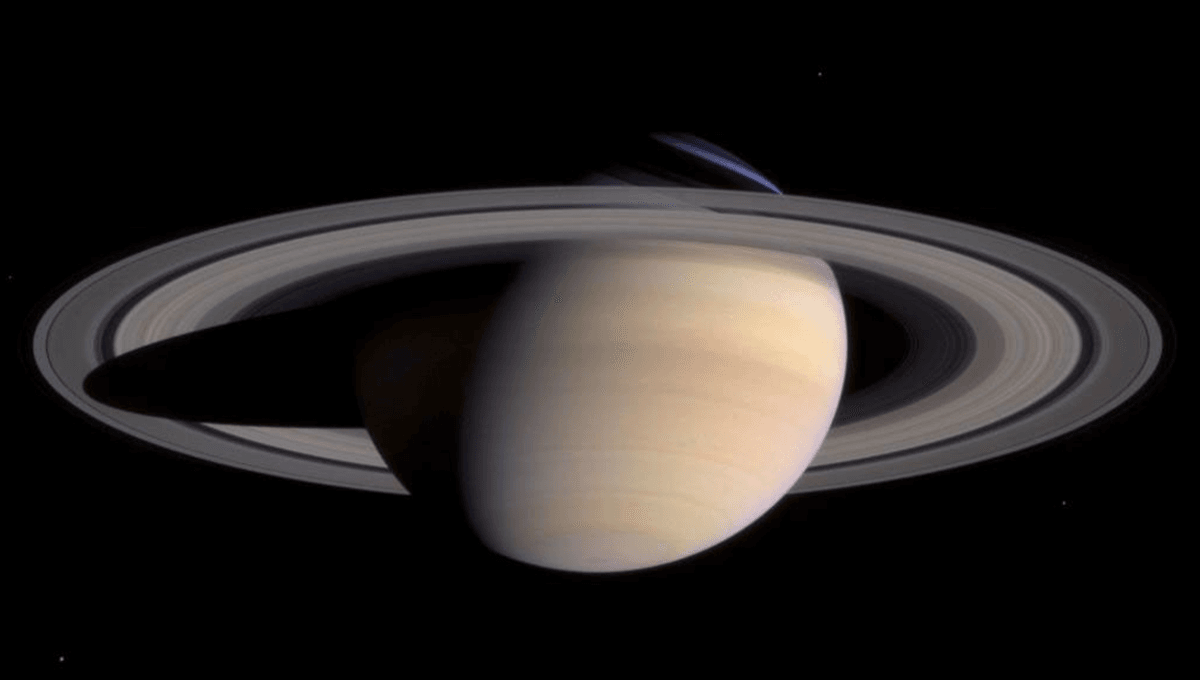
Astronomers at the Planetary Virtual Observatory and Laboratory (PVOL) are appealing for help, after an image taken by NASA’s Mario Rana appears to show an object slamming into Saturn.
Saturn, like Jupiter, is a gas giant. With their impressive masses, you would expect these giants to attract their share of asteroid impacts. Unlike terrestrial planets, which are usually left with an obvious crater after impact, on gas giants, it is not entirely obvious. With outer layers primarily composed of hydrogen and helium, any trace of an impact can disappear.
Astronomers have attempted to model how many impacts take place on the gas giant. One recent study put the number of impacts by objects over 1 kilometer at around 3.2 × 10−3 yr−1 ( 0.0032 per year, or 1 every 3,125 years). Smaller impacts are thought to be more common, with Cassini data showing that impacts can leave telltale ripples in Saturn’s rings.
“These new results imply the current-day impact rates for small particles at Saturn are about the same as those at Earth – two very different neighborhoods in our Solar System – and this is exciting to see,” Linda Spilker, Cassini project scientist at NASA’s Jet Propulsion Laboratory, explained in 2013. “It took Saturn’s rings acting like a giant meteoroid detector – 100 times the surface area of the Earth – and Cassini’s long-term tour of the Saturn system to address this question.”
Despite these impacts being relatively common – around 8,000 meteorites impact Earth every year – we have never observed an object hitting Saturn. Until, just maybe, now. On Saturday, July 5, NASA’s Mario Rana captured a potential impact, which has now been reported to the Planetary Virtual Observatory & Laboratory (PVOL).
The bright flash highlighted in the left side of the picture has the appearance of an impact event. Objects have been observed slamming into Jupiter every now and then, producing similar flashes.
While exciting, it is far from confirmed. PVOL is now appealing for further observations taken this morning in an attempt to confirm or refute the potential impact.
“Marc Delcroix reports a potential impact in Saturn captured in a few frames in a video observation obtained by Mario Rana,” PVOL explains. “The potential impact would be very faint and is unconfirmed. The very short impact flash occurred on Saturn on July 5th 2025, between 09:00 and 09:15 UT. It is very important to get other videos of Saturn taken during that time frame.”
Any astronomers who have observations from this time are urged to contact Delcroix to submit their data. Hopefully, soon we will have further observations from Saturday, helping us to confirm whether we have seen our first ever impact with gas giant Saturn.
Source Link: "Potential Impact On Saturn": Astronomers Appeal For Help As Video Appears To Show Object Hitting The Gas Giant